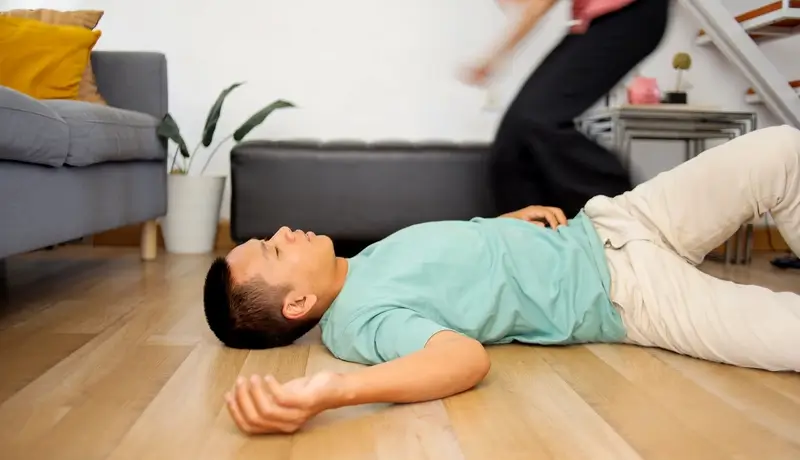Causes of convulsions
Everything You Need to Know About Convulsions
Convulsions are sudden, uncontrolled muscle movements that cause shaking and jerking in the body. These movements often happen with epileptic seizures, but they can also occur from infections, high fevers, or head injuries. Knowing the causes, symptoms, and treatment options for convulsions helps people respond safely during an episode.
What Are Convulsions?
Convulsions happen when muscles in the body tighten and shake without control. This can last from a few seconds to several minutes. Sometimes convulsions affect only one area, like an arm or leg, while other times they involve the whole body. Convulsions are often linked to certain types of seizures, but not every seizure causes convulsions.
Are Convulsions the Same as Seizures?
Convulsions and seizures are related but not the same. Convulsions refer to the rapid, jerking muscle movements, while seizures happen due to unusual electrical activity in the brain. Not all seizures lead to convulsions. For example, during an absence seizure, a person may become still and unresponsive without shaking. Some people may also have convulsions without a seizure, showing that the two can occur separately in some cases.

Causes of Convulsions
Several conditions can cause convulsions. Understanding the reason is important for proper care. Common causes include:
Epileptic Seizures
Epilepsy is a brain condition that leads to repeated seizures. Seizures in epilepsy happen due to electrical changes in the brain. The tonic-clonic seizure is the most common type that includes convulsions. During the tonic phase, muscles stiffen, and during the clonic phase, the body jerks. Some people may also make a groaning sound as air moves past their vocal cords.
Febrile Seizures
Febrile seizures affect young children, usually between 6 months and 5 years old, when they have a high fever. These seizures generally last less than 5 minutes and do not cause long-term problems. However, if a febrile seizure lasts more than 5 minutes or if the child doesn’t recover quickly, it is important to seek medical help right away. Although febrile seizures can be alarming, they are typically harmless when managed correctly.
Non-Epileptic Seizures
Non-epileptic seizures, also known as psychogenic non-epileptic seizures (PNES), look like epileptic seizures but do not come from abnormal brain activity. Instead, they are usually caused by emotional stress or trauma. Doctors may recommend therapies like cognitive behavioral therapy (CBT) to help reduce these types of seizures by managing underlying stress.
Paroxysmal Kinesigenic Dyskinesia (PKD)
Paroxysmal kinesigenic dyskinesia (PKD) is a rare genetic condition that causes convulsions triggered by sudden movement, like standing up quickly. PKD episodes are short, lasting less than 5 minutes, and tend to decrease as a person gets older. Parents can pass PKD on to their children, as it is a genetic disorder.
Medication Reactions
In rare cases, some medications can lead to convulsions. Drugs like antidepressants, stimulants, and antihistamines may cause convulsions in some people. Although this side effect is uncommon, it’s important to contact your healthcare provider if you experience unusual symptoms after starting a new medicine.
Migraines
Some people may experience convulsions after a migraine with aura, a phenomenon sometimes known as “migralepsy.” Experts continue to study whether migralepsy is a separate condition, as convulsions related to migraines are rare and usually follow intense headaches.
What to Do if Someone Has Convulsions
If you see someone having convulsions, quick action can help keep them safe. Here are some first-aid steps to follow:
- Move them to the floor: This helps prevent injuries from falling.
- Turn them onto their side: This position keeps their airway clear and helps them breathe more easily.
- Clear the area: Remove any sharp or hard objects nearby to prevent injury during convulsions.
- Support their head: Place a soft object under their head to avoid injury.
- Remove restrictive items: Take off items like glasses, ties, or necklaces.
- Call for help: If the convulsions last more than 5 minutes, contact emergency services.
Stay calm and make sure the person has space. Do not hold them down or put anything in their mouth, as these actions can cause harm.
Managing Convulsions and What to Expect
After a convulsion, it’s best to see a healthcare provider to find out the cause. Some convulsions, like febrile seizures in children, may stop happening as the child grows. However, other causes may need ongoing treatment. A healthcare provider can create a treatment plan, which may include:
- Medications: Some medicines can help reduce or prevent convulsions.
- Therapies: For non-epileptic seizures, therapies like CBT can help manage emotional triggers.
- Lifestyle changes: Reducing stress, getting enough sleep, and avoiding known triggers may help reduce episodes.
Summary
Convulsions are rapid, involuntary muscle movements that often happen with seizures, though not all seizures include convulsions. Many factors, including epilepsy, fever, and certain medicines, can trigger convulsions. Basic first aid can help keep someone safe during convulsions, and medical help is essential if convulsions happen frequently. With the right care and support, most people can manage or reduce the frequency and impact of convulsions.
Managing convulsions with early treatment and support can improve quality of life and help reduce the effects of this challenging symptom.
Frequently Asked Questions
1. What can cause seizures during exercise?
- Seizures during exercise can be caused by dehydration, a lack of electrolytes (such as potassium, sodium, or magnesium), or excessive muscle strain. Proper hydration and balanced nutritional habits can reduce the risk of seizures.
2. Are there seizures associated with sleep?
- Yes, sleep seizures (nocturnal myoclonus) occur during sleep or just before its onset. They are often harmless but, in some cases, may be linked to neurological disorders such as restless legs syndrome. A doctor can determine if further evaluation is necessary.
3. How does stress affect the frequency of seizures?
- Stress can increase the frequency of seizures, especially in individuals predisposed to psychogenic non-epileptic seizures (PNES). Managing stress through techniques such as meditation, exercise, or cognitive behavioral therapy can help reduce episodes.
